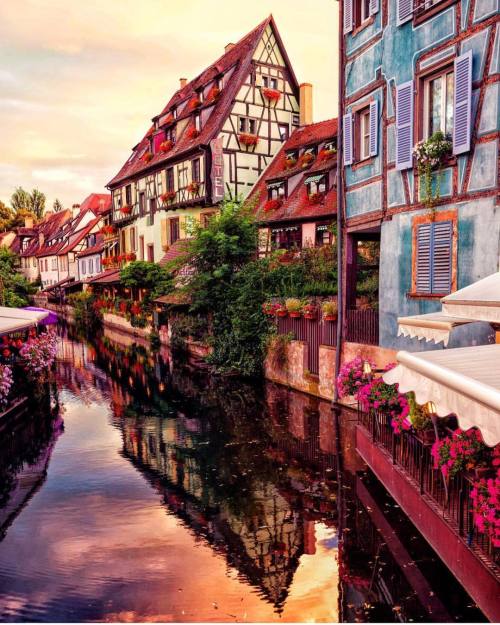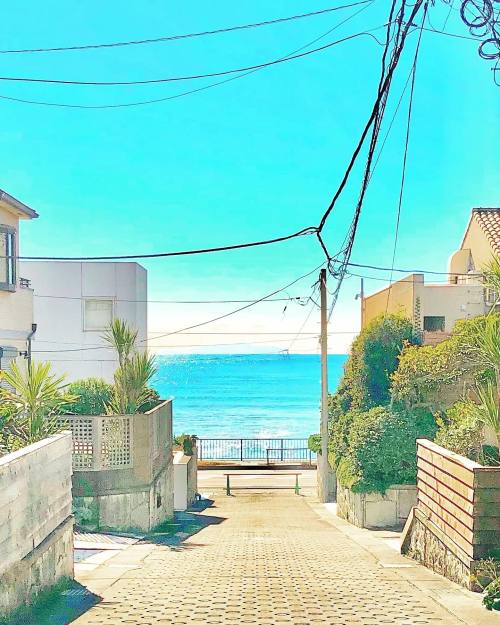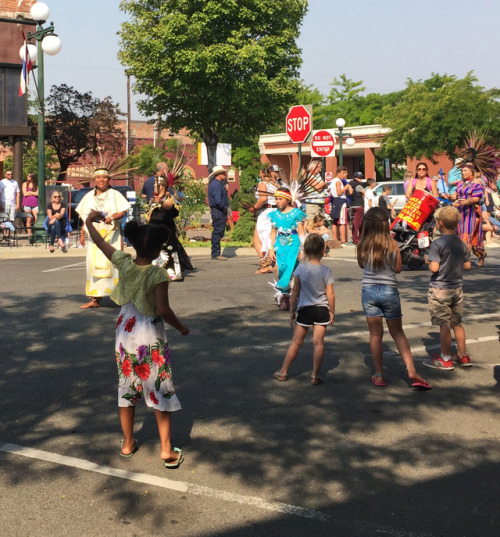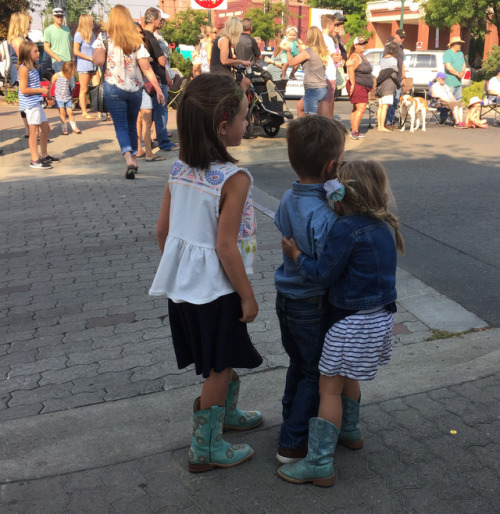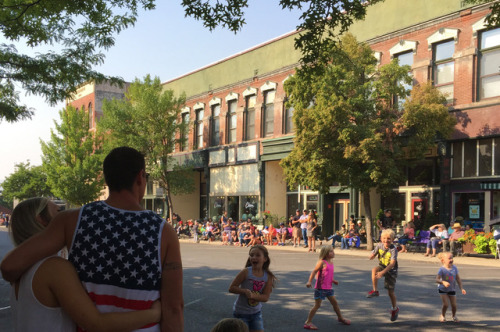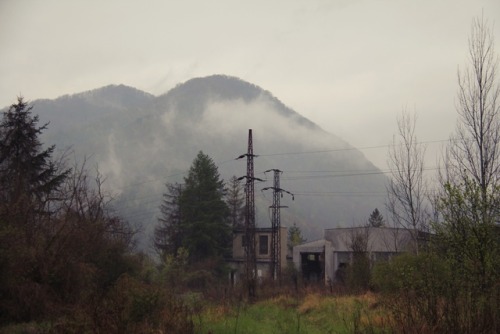#small town

cozy autumn days & spooky autumn haze

Nowhere but here. Pink building with sign in Marfa, Texas, USA.
I can’t imagine a parade without the children. Their excitement and delight at the colors and sounds, the clowns and candy, the marching bands and horses is a gift to witness. Through a comedy errors, I had only my iPhone to make photographs with - an entirely different experience than I was anticipating, but not entirely disappointing. I’ll be posting a series of a few candid “snap shots” entitled, “Children at the Parade.”
Children at the Parade - #1
Source: Diane Williams’s Photography
Post link
AlterNet, January 27, 2015.

Like most heroin users, Ory Joe Johnson’s addiction began with a perfectly legal prescription. After a bad car accident in which he broke his nose, jaw, collarbone and ankle, the Wyoming native was prescribed Vicodin for the pain. The meds eventually ran out, but his dependence on them remained. To fuel it, Johnson began dealing drugs, starting with crank (a low-quality powdered form of meth), and as the years passed and his addiction metastasized, eventually moving up to heroin. At the peak of his dealing career, Johnson was funneling drugs to a network of local college students and his reach extended to a constellation of southern Wyoming towns.
The subject of a recent GQ profile, Johnson is now serving nine years in prison for possession and intent to sell. Though he is just one dealer in just one corner of the country, his story has much to say about how heroin is gripping its pale white fingers around the throats of America’s small towns.
To make something clear right off the bat, we are not experiencing a heroin “epidemic.” As the GQ article points out, more Americans huff glue than use the drug, and the total number of users is a tiny fraction of the U.S. population. But for a number of reasons, including high national rates of opiate addiction, rock-bottom prices, corrupt medical professionals, and a surge in supply from Mexico, heroin usage is on the rise. In 2012, some 669,000 Americans reported using heroin in the past year, according to the National Survey on Drug Use and Health. That year alone, 156,000 people started using the drug—nearly double the number of people in 2006 (90,000). As the DEA’s regional head for the Midwest put it in an interview with BBC, “Heroin addiction is probably at its all-time high.”

(Source GQ)
It’s impossible to understand the drug’s recent resurgence without looking at the rise of prescription opiates in the 1990s. In “The New Heroin Epidemic,” a terrific investigative piece in the Atlantic, Olga Khazan traces the emergence of blockbuster pain medications like Oxycontin and Percocet. Big Pharma executives waged an aggressive marketing campaign to popularize the drugs, downplaying the risk of addiction, sending thousands of doctors on junkets across the U.S. to learn about the pills and offering sales reps millions in bonuses for convincing doctors to prescribe them. Their efforts succeeded, but with devastating consequences. As the drugs became more widely prescribed, painkiller abuse skyrocketed; the number of deaths caused by prescription painkiller overdose quadrupled between 1999 and 2011. In some states, prescription abuse was facilitated by corrupt doctors who overprescribed, sold prescriptions on the side, and even exchanged the pills for sexual favors.
The Atlantic article uses the case study of West Virginia to explain how prescription pill addiction heralded the current surge in heroin use. A poor state with a high concentration of physically demanding manufacturing and mining jobs and little else in the way of economic opportunity, West Virginia was a ripe target for prescription drug abuse. As Khazan writes, by 2009 residents were annually filling an astonishing average of 19 prescriptions per person. Around this time, medical and state authorities started cracking down, jailing corrupt physicians, establishing databases to prevent patients from getting prescriptions from multiple clinics, and developing pills that were less easy to crush into powder form. Prescription pill use fell. But people were already addicted, and were going to find another outlet. Three out of four new heroin users say they abused prescription painkillers before turning to the drug.
This spike in demand for heroin coincided with a surge in supply. Mexican cartels, which are moving out of the marijuana market as legalization gains a firmer hold in the U.S., are sending cheap, high-quality heroin across the border. As the Washington Post reported, “The amount of cannabis seized by U.S. federal, state and local officers along the boundary with Mexico has fallen 37 percent since 2011, a period during which American marijuana consumers have increasingly turned to the more potent, higher-grade domestic varieties cultivated under legal and quasi-legal protections in more than two dozen U.S. states.” Heroin has advantages for both opiate addicts and traffickers. It costs only $10 a pill, compared to $80 for oxycodone, and is easier to transport and conceal than marijuana.
Of course, this isn’t the first time Americans have embraced heroin. But, as every article about the drug’s resurgence points out, the face of heroin use has changed. In the 1960s and ‘70s, heroin took hold in urban centers. “Forty or fifty years ago heroin addicts were overwhelmingly male, disproportionately black, and very young,” according to the Economist. “Most came from poor inner-city neighborhoods.” Today, many heroin users live in suburban and rural areas—places like southern Wyoming and the foothills of West Virginia. Ninety percent of users are white, and more than half are women. It doesn’t take too many logical leaps to understand why the drug’s newfound popularity has been met with so much attention, and why the media is so willing to label it an epidemic.

(Source: The Economist)
This changing user demographic has been met with a shift in official response. “Now that heroin addiction is no longer a disease only of the urban poor, attitudes are changing. The Obama administration’s latest national drug strategy, published in July, criticized ‘the misconception that a substance use-disorder is a personal moral failing rather than a brain disease,’” according to the Economist. They have called for the expansion of needle-sharing services and greater access to naloxone, a drug that can reverse the effects of heroin overdose.
It’s critical that federal and state authorities expand drug and psychological treatment services for heroin users. Physicians interviewed in the Atlanticarticle say that a combination of drug treatment and talk therapy is the best way to wean people off of its influence. But the areas that are particularly blighted by the drug, like rural West Virginia, are often the least equipped to handle it. They are economically depressed regions with limited access to health services, few job opportunities and bare-bones police departments. Only two-thirds of West Virginians have access to mental-health treatment, and the medical officer for the Substance Abuse Mental Health Services Administration said that only a handful of places in the country have enough providers able to offer drug treatment alongside therapy. This is where we have to focus our energies. Because in the kinds of towns where Ory Joe Johnson was pushing heroin—dusty roadstops of 3,500—addiction is an epidemic.

Fitchville, Ohio

Tiffin, Ohio

McCutchenville, Ohio

Elmore, Ohio

I keep thinking about this quote from John Mellencamp in a recent Esquire magazine.
This is from the person who wrote “I was born in a small town…gonna die in a small town”
Better luck in the next town.
Shot on an early 1970′s camera from the USSR with expired film.
Post link
Page ¼. A sample from a new comic in Full Bleed Vol. 3: Heavy Rotation. Release Date: TBA. Check out the Kickstarter to learn more. This comic is about my own paranoia and fears while traveling as a trans person (especially to conservative towns), and the assumptions one can make. This about the time I flew to my parents house 2 years ago for Christmas.
Post link
-There are stray cats everywhere. Their screams sound a lot like children.
- The vines are dragging the buildings back into the earth.
- The only radio stations that come in clear are rap and country, and occasionally polka on Sundays.
- Church bells ring, but every church is empty.
- Chip bags and leaves skitter across the empty street. No wind blows.
- The fountain in the town square broke in 2005. People still throw pennies in. No one dares take any out.
- The train yard is closed down, with train cars abandoned, motionless on the tracks. You still hear the train whistle, but only on rainy nights.
-The feeling of a gray sky is always there, trapped in the shadows of buildings, even on sunny days.
- Hollow factories with boarded windows and broken glass. It’s too cold for spiders, but something is crawling on the wall.
- Stop signs with bullet holes.
- Everything is gray, red and brown, with the only color coming from the occasional orange traffic cone.
- You see your own items for sale in an antique store. You’re not sure how they got there, but decide against buying them back. Their secrets are someone else’s problem now.
- Faded billboards from when bread was 10 cents.
- Fireworks get set off in backyards without warning, regardless of time of year. You hope that it’s fireworks, but lock your door anyways.
- Victorian houses with a junkyard of faded toys in the backyard.
- The only ones who walk the street are groups of teenagers and senior citizens. If you ask them for help they are the nicest people, but if they approach you first, run. You are about to be involved in a horrible experience.
- There is that one lake where the police always go to look for discarded weapons and bodies. They always find something.
- There is a couch in the middle of the woods. Somebody was sitting there not too long ago, and they won’t be happy to see you when they come back.
- Lots of sirens, but no police cars.
- The man with the briefcase is more dangerous than the kid with a gun.
- Downtown’s Christmas decorations stay up all year long. Nobody wants to put forth the effort of taking them down.
- It’s 2 a.m. You think you are the only one awake. You gaze out the window into the street filled with houses and quiet cars. The streetlight flickers. A raccoon walks down the middle of the road. It minds it’s own business, you mind yours.
- Your neighbors house got torn down. You didn’t notice.

